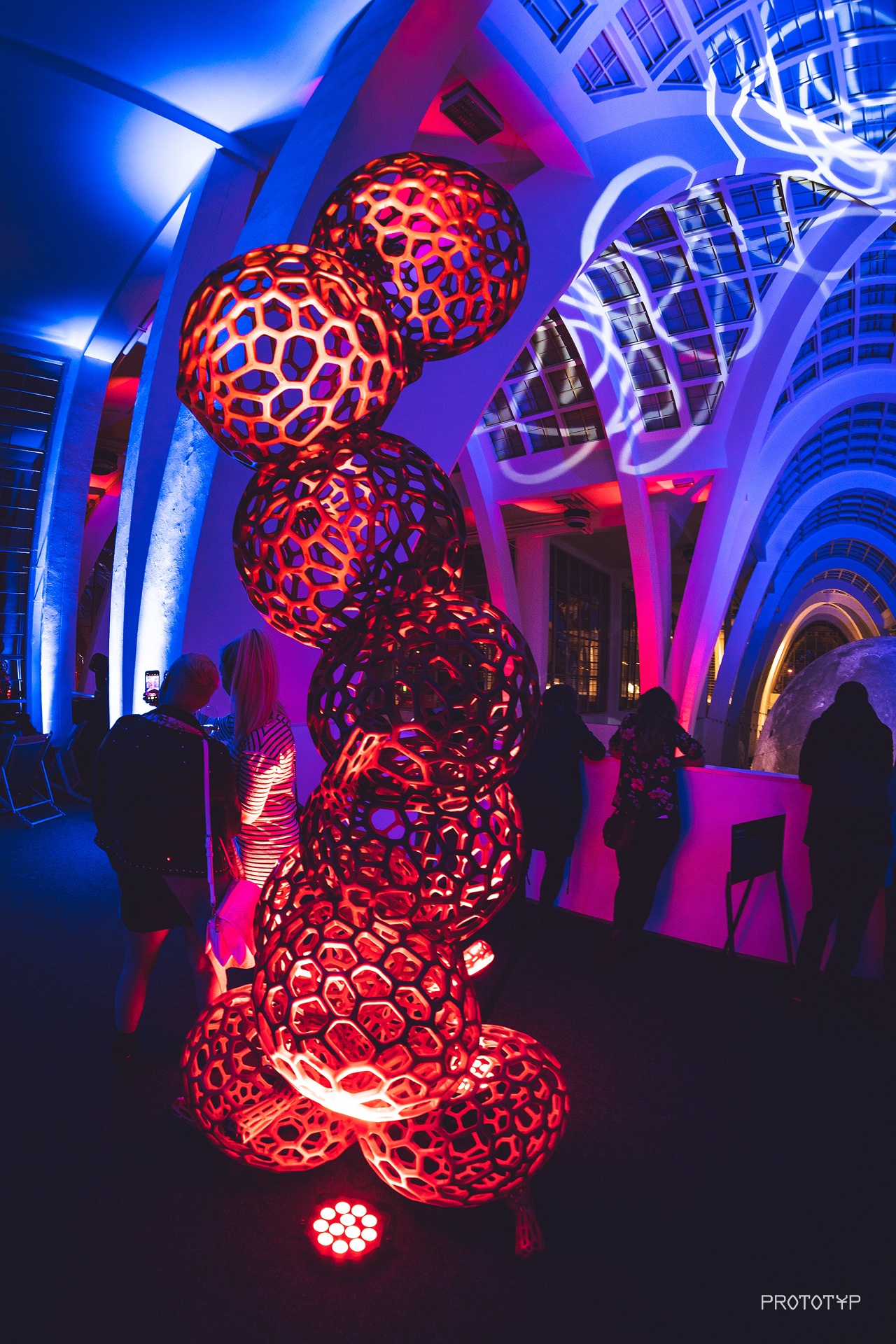Statues created using 3D printing
Tomáš Medek
The starting point of the sculptures - pear, tomato, pepper, pumpkin and patizon - is abstracted into complex shapes with a rib structure inspired by triangular or square spatial networks of computer 3D technology. Objects are direct 3D print from computer, made of ABS plastic. The scanned object data is transferred by the author to the computer, where it works with their various slices or deforms, perforates and constructs new internal structures, which are then printed in a 3D printer.
About autor
In the past decade, Tomáš Medek has been intensively engaged in new 3D technologies & #8211; such as FDM Rapid Prototyping, 3D Digitization and Measurement (3D Printing and 3D Scan), enabling it to create the most complex structural objects that are virtually unrealistic without these methods. Using this method he creates, among other things, several meters of objects made of composite material or ABS plastic (Twins, 2014, Patizony, 2017, Hokaida, 2018). The works are created by first scanning an inspiring object, the data is then modified in a computer, where the object is deformed, multiplied and at the same time the organic network is directly constructed on it. The objects are mostly made up of several hundred parts printed by 3D printers, but they have to go through the author's hands several times (designing, cutting, folding, printing, cleaning, gluing, sealing, grinding, reinforcing and finishing the surface). material, so on time. The creation of one statue takes at least one year. Each object thus created has its own story, which is carefully documented by the author.
TWINS, 2014, ABS plastic, 120x220x125cm
Using a 3D scanner, I scanned the gourd, which I adjusted to the required shape by deforming it in a 3D program. This was followed by modeling the organic structure on the surface of the object and creating the resulting composition, and then enlarging the object to a real scale and cutting it into individual printable parts depending on the size of the printing pad. Everything was precisely described and marked, because there were 360 parts for the final realization. The printing of individual parts took one year. Individual connections are reinforced with metal pins. The last stage was the so-called postprocessing – sanding, sealing and spraying the final color.
PATISONS, 2017, ABS plastic, 112x300x124cm
With the help of a 3D scanner, I scanned the patizon, which I multiplied, connected and then adjusted in the 3D program to the required shape. A composition of four patizons interconnected by an organic structure into one whole was created. The object was realized in ABS plastic using a 3D printer. Over 1,000 parts were printed, which were assembled (folded and glued) and then cemented, sanded and internally reinforced over the course of one year. The color of the object came from the intention of using different types of leftover printing strings and was so interesting that I kept it and thus started a series of my colored objects.
HOKKAIDO, 2018, ABS plastic, 320x133x130cm
The "HOKAIDO" object is a three-meter vertical sculpture formed by a composition consisting of ten pieces of fruits interconnected by an organic network, which was realized with the help of 3D technologies (3D scan, 3D programs, 3D printing), in the material ABS plastic. This is an exceptional project, especially from the technological point of view - so far, the object has not been realized using a 3D printer on such a scale, and basically it would be practically unrealizable without these methods. The object was created from 737 pieces and its creation took 3 years.
PEAR, 2018, ABS plastic, 84x200x80cm
It is based on a scanned dried pear fruit. The data was subsequently modified in the computer – the polygonal network was significantly reduced. The result was openwork shapes, which in their final form have a cubist impression. The color of the object was generated by the object texture program and the individual colors were printed directly from the color strings. This was followed by the gluing of individual parts and postprocessing (grinding and filling with a 3D pen). The object was printed from 397 parts and was created for about half a year.
TOMATO HYBRID II, 2019, ABS plastic, 85x185x105cm
The inspiration for this object was a tomato that grew in our garden. It was a fleshy Brutus that was scanned and then modified in the computer where the polygons were reduced. Then I mapped a painting by expressionist painter France Marc onto the object. The intention was to express expression and color with a given interplay of inspirational sources. The virtual object was cut into 750 parts, which were printed in a 3D printer using colored strings. This was followed by folding and gluing and postprocessing (sanding, sealing, reinforcement). The whole process took a little over half a year.



